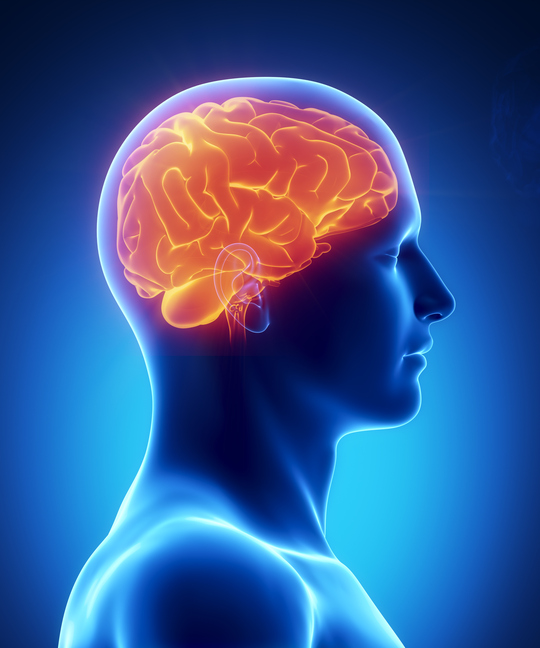
Approximately 4 million concussions occur in the USA per year during competitive sports and recreational activities. Unfortunately, up to 50% of the concussions may go unreported or undiagnosed. A concussion is defined as a traumatically induced transient disturbance of brain function due to head contact or rapid head acceleration and deceleration. Concussion is a subset of mild traumatic brain injury (MTBI) which is generally self-limited and at the less-severe end of the brain injury spectrum.
Concussion signs and symptoms:
- Headache
- Dizziness
- Difficulty with balance
- Nausea/vomiting
- Fatigue
- Difficulty sleeping
- Double or blurred vision
- Sensitivity to light and sound
- Difficulty with short-term or long-term memory
- Confusion, Slowed “processing” (for instance, a decreased ability to think through problems)
- “Fogginess”
- Difficulty with concentration
Minor head contacts do not cause long term problems?
Any head contact is bad. The more head contacts an individual has, the great the risk of long term brain injury. The NFL has made popular the clinical term CTE (Chronic traumatic encephalopathy) which is a progressive neurodegenerative disease that occurs in association with repetitive mild traumatic brain injury. In youth and high school football there are over 6,000 head contacts per season, with many of these being subconcussive force. The problem is that each head contact is cumulative and may lead to long term brain injury and symptoms at a much later date.
Youth players are immune to brain injury because they are young and pliable?
Youth athletes are more susceptible to head injury than adults. They may have prolonged recovery following a concussion and are more susceptible to future concussion after the first insult. Studies show that even small contacts to the head during football cause changes in the brains neurophysiology. To date it is not known what these changes may lead to in the future for these young athletes.
Football helmets, soccer head guards and mouth pieces protect the brain against concussions?
Helmets, both hard (football, lacrosse and hockey) and soft (soccer, rugby), mouth pieces are best suited to prevent impact injuries (fracture, bleeding, laceration, etc.) but have not been shown to reduce the incidence and severity of concussions. (J Neurosurg. 2016 May 27, Br J Sports Med. 2013 Jan 2013 Jan).The brain sits inside the skull encased and floating in fluid (cerebrospinal fluid). As the head is rapidly moved the brain moves inside the skull hitting the internal boney structure. This impact of the brain against the skull creates microtrauma and injury to the brain. Any rapid movement of the head and or head impact can create a concussion and brain injury.
If you have symptoms of a concussion it is fine to resume the sport activity?
Second impact syndrome is a devastating injury that primarily affects athletic children and young adults. It occurs when a second concussion occurs before symptoms from the first concussion have resolved. Diffuse and often catastrophic cerebral edema results.
Concussion symptoms should be resolved before returning to exercise or spot. There should be a gradual, step-wise increase in physical demands and sports-specific activities. If symptoms occur with activity, the progression should be halted and restarted at the preceding symptom-free step. It is imperative to have advisement from your physical therapist or physician in resuming activity.
Youth football impacts have much less force than high school and college impacts therefore there is little chance of head injury in our youth football players?
Youth football players can experience remarkably similar head impact forces as high school players, Approximately 50% of all head impacts (6183) had a linear acceleration between 10g and 20g, but nearly 2% were greater than 80g (equal to high school and college forces). (Med Sci Sports Exerc. 2015 Aug);
Eliminating body checks in hockey and the head up football program has reduced concussions?
Eliminating body checking among hockey players has been effective in injury prevention and reducing concussions. Heads up football is reducing the number of helmet contacts, however, there still is up to 5,000 impacts in youth football (reduced from over 6,000 in a typical season).
How Can a Physical Therapist Help?
Physical therapists can evaluate and treat many problems related to concussion. After a concussion, it is important to limit any kind of exertion. The brain won’t have time to heal if you increase physical exertion too soon. Because every concussion presents differently, the physical therapist’s examination is essential to assess your individual symptoms and functional limitations. The physical therapist then designs a treatment program. Mishock PT also offers ImPACT testing. This is a neurocognitive computerized test that provides a baseline for the athlete or a post-treatment outcome tool for those athletes being treated for a concussion.
We can help!
If pain is limiting you from doing the activities you enjoy, give Mishock Physical Therapy a call for a Free Phone Consultation at (610)327-2600 or email your questions to mishockpt@comcast.net. Also, visit our website to learn more about our treatment philosophy, our physical therapy staff, and our five convenient locations in Gilbertsville, Skippack, Phoenixville, Barto, and Limerick
Dr. Mishock’s new book has been released, “The Rubber Arm: Using science to increase pitch control, improve velocity and prevent elbow and shoulder Injuries.” This book can be found at train2playsports.com.
If you could benefit from ImPact testing, please give us a call for a FREE phone consultation at (610)327-2600. Also, visit our website at: www.mishock.wpengine.com, or like us on Facebook: www.fb.com/MishockPhysicalTherapy.
* Phone Consultations are not applicable to patients in federal or state funded programs, such as Medicare and Medicaid.
* Screenings are consultations and do not involve a physical therapy evaluation or treatment.
Dr. Mishock is one of only a few clinicians with doctorate level degrees in both physical therapy and chiropractic in the state of PA.
